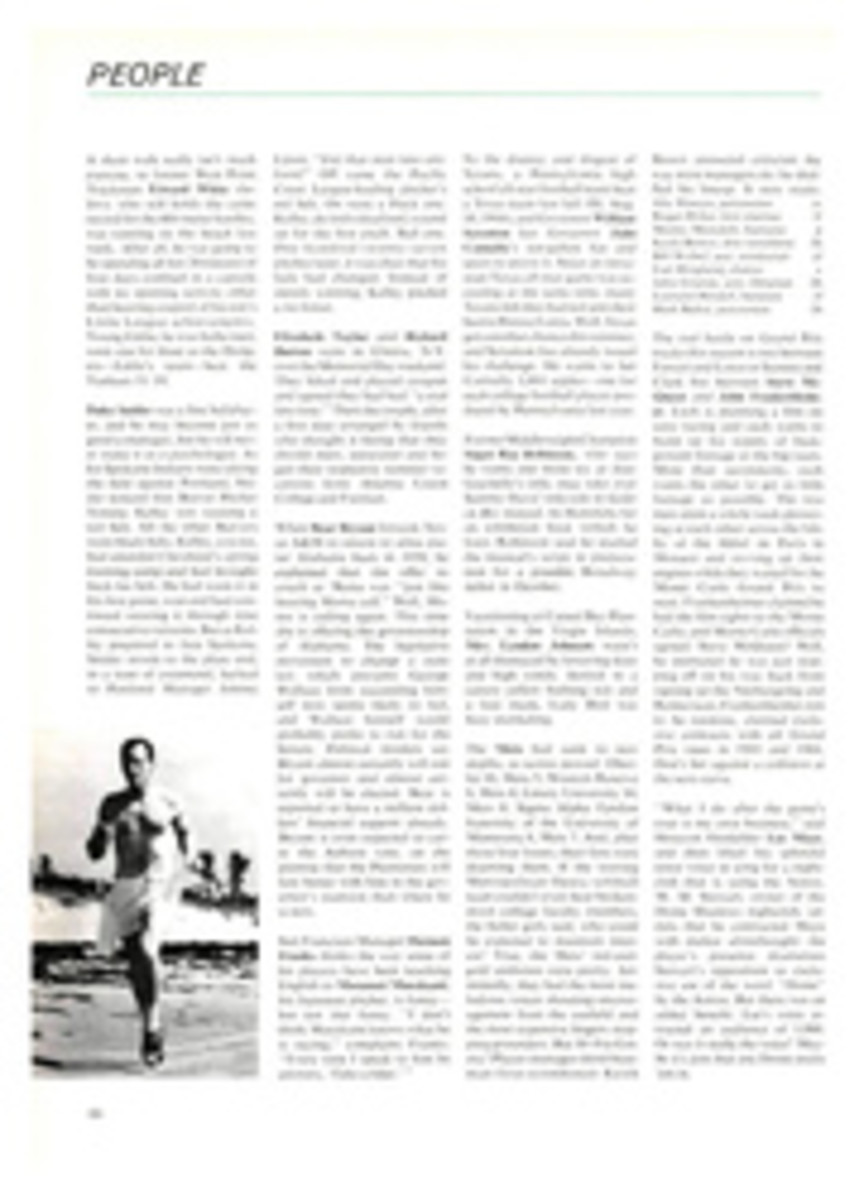
LETTER FROM THE PUBLISHER
If you ask a mountain climber why he does it you are going to get the tattered old cliché "because it is there," and not much else. If you need further explanation, you should stay off mountains. There is a certain literary parallel: a man can write a story about mountain climbing because it is there. And, like the climber, he may not make it on the first attempt, yet he is irresistibly drawn back to it again and again until the story is written.
Concerning 72 Hours of Terror, which begins on page 86, professional journalist and amateur climber James Lipscomb says, "It was a year before I wrote it, and one and a half years before I stopped adding to it." Of such repeated, studied assaults are good stories made. Lipscomb's account of 10 climbers trapped high on the face of Wyoming's Grand Teton clearly fits the parallel between mountaineering and writing. Lipscomb himself was climbing in the Tetons the day the tragedy began to unfold in late July of 1962. He remained in the area until the rescue was over, and, like most persons present at the time, he thought it would one day make a compelling story. But, he decided, "Somebody else will write it. It's not for me." Such an attitude was, of course, impossible to maintain. The story kept nagging at him, and nobody else did write it.
"But I never really understood mountain climbers," he says, "until a year later when I went on a climb in the Tetons with a highly experienced friend. We were caught in a dangerous situation. I was clinging under an overhang; I was badly scared. My leg muscles were trembling uncontrollably. I remember thinking, 'I'll never—if I ever get back down—get on a mountain again.' A few days later we went again. How does one describe it? There is this fascination...."
This new understanding of climbing provided the final impetus for him to attack the tale that begins this week. Lipscomb returned to the Tetons and interviewed everyone in the rescue party. He devoted his spare time during the rest of the year to tracking down the survivors, not all of whom would talk. The leader of the climb refused to discuss it at all. Another key member relented at the last minute and filled in the final gaps for Lipscomb.
Now, having written the story because it was there, Lipscomb is back in his role as a photographer-producer of documentary films. He once was a writer (for LIFE magazine from 1953 until 1961). Before that, he had been a fire lookout at Yellowstone Park, a college English teacher and a one-year expatriate in France. As a journalist with camera, Lipscomb was chief photographer on Faces of November, a stark account of the American people's reaction to the assassination and funeral of President Kennedy, which won the Venice Film Festival's documentary award in 1964. This year a Lipscomb film has been selected for entry in the Edinburgh and Venice competitions. There is one more thing: successful cameraman Lipscomb is thorough. The year he went back to get his story (and the year he got to understand mountain climbers) he tried the Grand Teton himself, using a less hazardous route than the party he wrote about. "But I got to within 100 yards of the top," he says, "saw an ice gully I could not handle, and came right back down."
PHOTO
CLIMBER LIPSCOMB in Tetons on same day tragedy hit party he was to write about.

